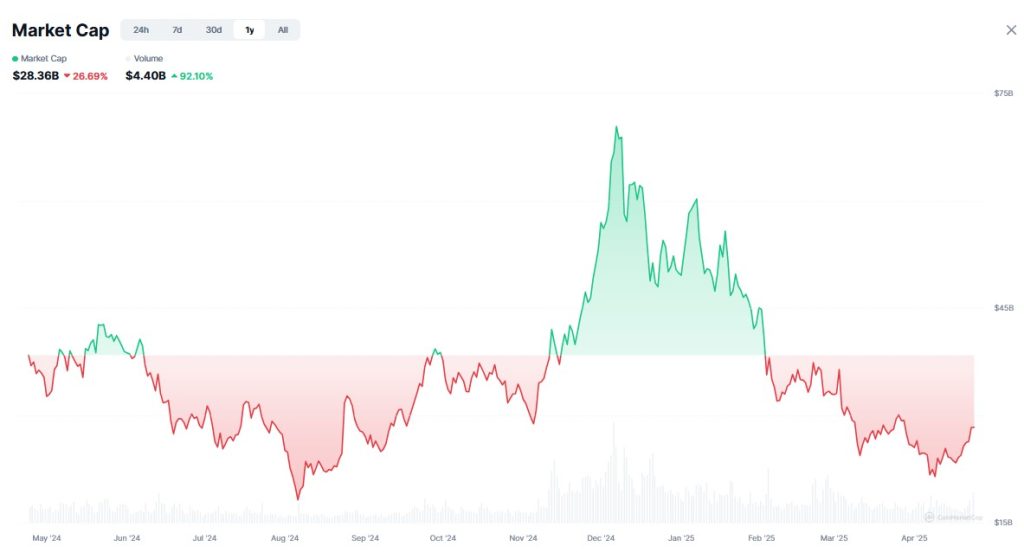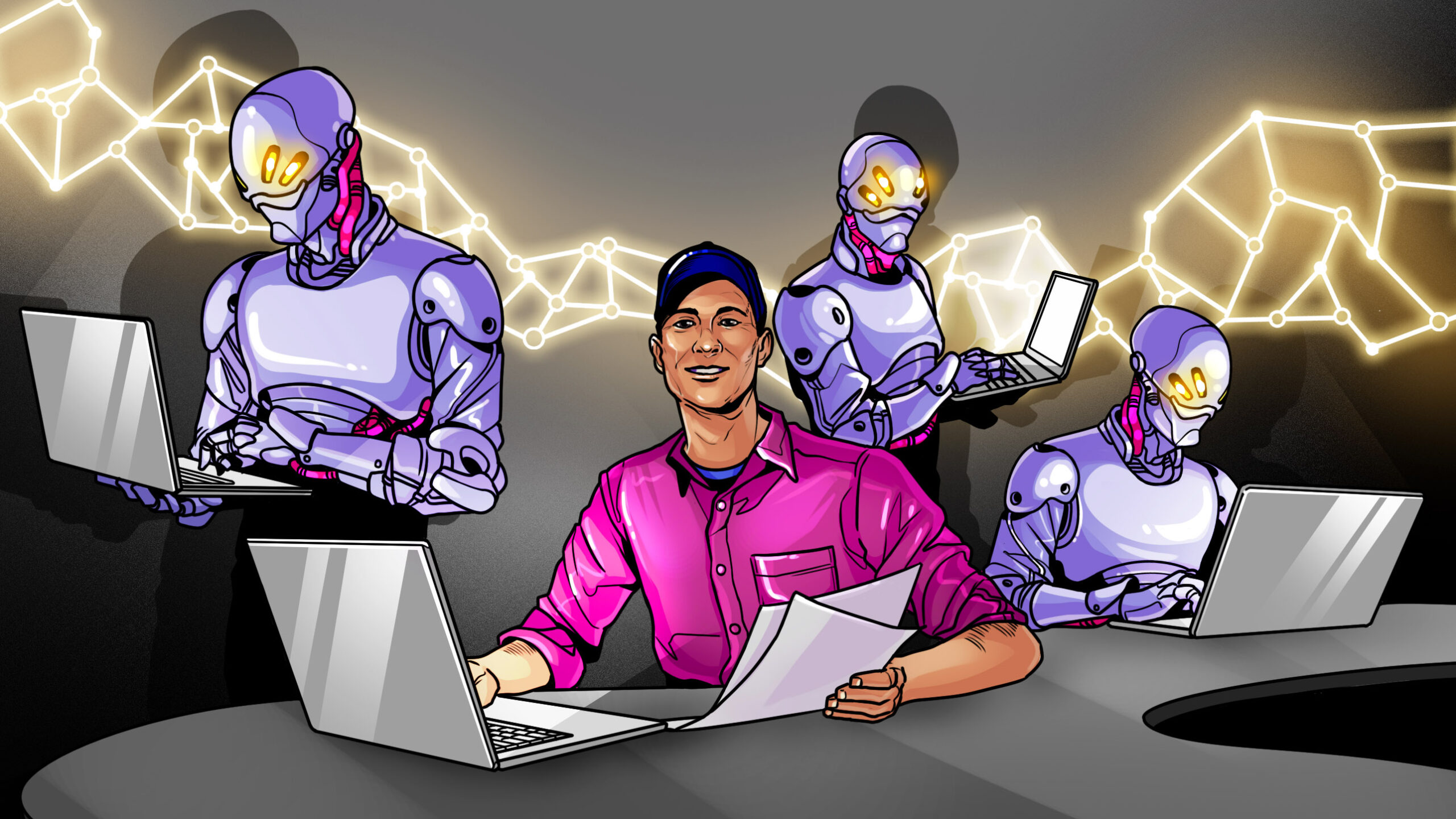Crypto AI rises again The crypto AI sector is showing signs o
  |
Crypto AI rises again
The crypto AI sector is showing signs of life, with the combined market cap increasing by more than one-third in the past two weeks.
The sector soared to a combined market cap of $70.42 billion back in mid-January and just as quickly plummeted back to earth, bottoming out at $21.46 billion on April 9, according to CoinMarketCap. It’s now back at $28.8 billion, with much of the growth in the past week.
Near gained 26% in the past seven days, Render is up 23%, the Artificial Superintelligence Alliance gained 36% and Bittensor surged 47%. (That said, even Ether gained 14% this week, so everything has been going up.)
The AI crypto sector’s outperformance came hot on the heels of a CoinGecko report on April 17 that found that five of the top 20 crypto narratives are AI-related, capturing 35.7% of global investor interest ahead of six memecoin narratives, which had a 27.1% share.
The most popular AI narratives were: AI in general (14.4%), AI agents (10.1%), DeFAI (5%, possibly just people asking how to pronounce it), AI memecoins (2.9%), AI agent launchpad (1.8%) and AI framework (1.5%).


Research out this week from CoinGecko suggests the overwhelming majority of crypto users (87%) would be happy to let an AI agent manage at least 10% of their portfolio, and half of users would let AI manage 50% or less.
This strong support for a relatively risky new technology suggests it will be a big growth sector in the years ahead. If you want to get in early, check out Olas and its Baby Degen crypto trading AI agents.
Digital Currency Group’s Barry Silbert backs Bittensor
Bittensor’s big price increase this week may have also been related to Digital Currency Group CEO Barry Silbert talking up the project in a Real Vision podcast.


Silbert created a new venture last year called Yuma that’s exclusively focused on building new subnets on Bittensor’s AI marketplace. Silbert told Real Vision founder Raoul Pal that decentralized AI is going to be “the next big investment theme for crypto”
“We’ve backed a number of them, but the one that over the past year or year and a half that has reached escape velocity is Bittensor, and so I decided last year, we’re going to do with Bittensor – try to do with Bittensor what we did with Bitcoin.”
Robot butlers are here
One big problem in robotics and AI is that they are very good at performing the exact tasks they are trained for, and very bad at dealing with anything novel or unusual. If you take a robot out of its usual factory or warehouse and plonk it into a different one, it invariably doesn’t know what to do.
Also read: Ethereum maxis should become ‘assholes’ to win TradFi tokenization race
Physical Intelligence (Pi) was co-founded by UC Berkeley professor Sergey Levine and raised $400 million to solve this problem. It’s developing general-purpose AI models that enable robots to perform a wide variety of tasks with humanlike adaptability.
That means the chance of you getting a robot butler in the next few years has increased dramatically. Its latest robot/AI model, π0.5 can be plonked down in anyone’s home and given instructions like “make the bed,” “clean up the spill,” “put the dishes in the sink,” and it can usually work out how to do it.
“It does not always succeed on the first try, but it often exhibits a hint of the flexibility and resourcefulness with which a person might approach a new challenge,” said Pi.
A new robot policy just cleaned up a kitchen it had never seen before
[watch what happens.
paper included ⬇️]Pi-0.5 builds on top of Pi-0 and shows how smart co-training with diverse data can unlock real generalization in the home. It doesn’t just learn from one setup but… pic.twitter.com/5llnXj6QlH
— Ilir Aliu – eu/acc (@IlirAliu_) April 23, 2025
Geoguessing gets good
An online trend based on the GeoGuessr game has seen people posting street view pics and asking AI models to guess the location. OpenAI’s new o3 model is exceptionally good at this, thanks to its upgraded image analysis and reasoning powers. Professor Ethan Mollick tested it out this week by stripping location info from a picture taken out of the window of a moving car.
The AI considered a variety of clues, including distinctive lamp post labels, Japanese road furniture, gray cylindrical towers and a seafront motorway, and was able to pinpoint the exact location on the Hanshin Expressway in Japan, opposite the offshore wind marshalling yard at Ohama Wharf.
“The geoguessing power of o3 is a really good sample of its agentic abilities. Between its smart guessing and its ability to zoom into images, to do web searches, and read text, the results can be…
cointelegraph.com
